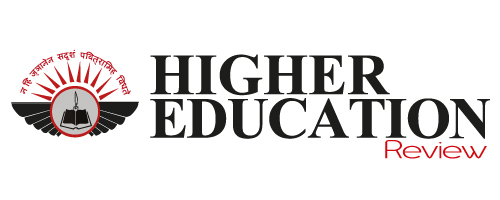Building a Talent Ecosystem: Collaboration as a Key Recruitment Strategy in IT
 Mahendran Dilli, SVP, People Operation, Indium Software, in an exclusive interview with Higher Education Review, shares his view on the recruitment strategies to sustain a collaborative talent ecosystem, how IT organizations integrate technology to optimize collaboration, key performance indicators to measure collaboration success and more.
Mahendran Dilli, SVP, People Operation, Indium Software, in an exclusive interview with Higher Education Review, shares his view on the recruitment strategies to sustain a collaborative talent ecosystem, how IT organizations integrate technology to optimize collaboration, key performance indicators to measure collaboration success and more.
Key Insights:
- Leveraging placement organization for external talents
- Building collaboration levers with educational institutions
- Govt enables IT collaboration via apprenticeships
In today's competitive IT landscape, what strategies can IT companies implement to successfully create and sustain a collaborative talent ecosystem, and how can these strategies address talent shortages?
A company's biggest challenge is getting the right talent for the right job at the right time. In traditional times, there were dependencies on various channels. But nowadays, with AI technology, there are many more opportunities for IT firms to start looking at how to position talent and, as employers, the kind of talent attraction factors that companies have and whether they need to focus on talent diversity and inclusion. As firms move forward on specifics for building the ecosystem to advance fulfillment and reduce talent shortages, it is vital to go through multiple channels. Companies get the right talent through internal opportunities, which can be mobilized for opportunities. In the current scenario, one of the challenges IT companies face is that they can't find 100% fit talent for any requirements and start looking for certain adjustments, skills and levers on upskilling, reskilling and cross-skilling to grab the talent. Organizations will have a lot of stickiness concerning talents or even embrace opportunities. In the era of a competitive IT landscape, firms need to consider key channels for attraction and retention. Relying comprehensively on market hiring without fostering stickiness can present challenges for attracting and retaining talent.
Social media is critical for IT firms to start tapping channels outside the business. Apart from this, there are other social media platforms, such as LinkedIn, Instagram and Facebook, wherein firms can start communicating about the brand and opportunities. For niche segments, hiring for the market will be a challenge. Hence, it's all about tapping the proper channels, having the right ecosystem, and building engagement.
Collaboration in recruitment fosters innovation by diversifying the sources of talent and bringing fresh perspectives into IT teams. What collaborative recruitment models have been most successful in driving innovation within IT teams?
It's all about how firms engage with the talent communities across different channels, whether social media or internal or external talent. It is crucial to start thinking about building talent communities. The situation will be challenging once firms start considering the reactive way of hiring talent. At any point in time, based on the pattern of what firms have been hiring in the past year, the company has a clear idea that specific top skills are coming up as opportunities for demand in the future.
Considering the kind of talent base in educational campuses and how the firm is working with them proactively and building the talent base. Hence, it is crucial to look into the future long-term needs, how firms start building them, and how they work with the talent ecosystem on campuses. Moreover, the other piece of hiring is utilizing vendors for placements. The kind of engagement organizations have with their placement vendors is extremely important. However, considering vendors as external parties and wanting to rectify firms' internal issues might not work out. It is essential to start looking at whether it is even a placement organization as an external arm of talent acquisition.
Whatever support firms can provide for their internal talent acquisition as a team and cannot provide to external parties, whether vendors, colleges, or other channels of opportunity, will not help them build stronger collaboration. The best way to handle this is to understand the perspectives on what would work for the company and make sure that engagement channels are built, which will help firms grow.
Advanced technologies such as AI and analytics can help identify collaborative opportunities and predict future talent needs in IT. How can IT organizations integrate technology to optimize collaboration within their talent ecosystems?
From a talent screening standpoint, it's not about getting thousands of profiles, but it's all about getting the qualified set of profiles using the talent screening process where AI plays a significant role. There are a lot of internal opportunities firms have to tap into, and many external tools are available in the market today. To reduce the cycle time typically required for firms, they aim to narrow down from 5,000 profiles to the last 50 most qualified ones that should go through the pipe of mixed testing. How does it help? It helps reduce cycle time in the end-to-end process. Besides, the upstream and downstream challenges that firms have concerning people spending a lot of time, whether from practice teams, sales teams or talent acquisition teams, the company saves time and energy for everyone and costs.
To firms reach at scale to a larger community of talent, for instance, if a firm does a job posting through social media, it can expect thousands of profiles. The challenge is how to qualify even thousands of profiles quickly. AI is a perfect option for at-scale reach out, which means though there are 10,000 profiles available in the talent base, it is possible to reach out to all candidates in just 15 minutes or by a standard call and through the survey. The bot can do this in the backend, where it has the entire human interface regarding talking, understanding and reaching out like a recruiter. IT organizations have to leverage specific tools available to qualify larger volumes of profiles to a lesser-qualified set.
Universities and technical schools are critical partners in shaping industry-ready IT professionals. What strategies can IT companies adopt to align their talent needs with academic curricula, and how can these collaborations foster innovation?
It's extremely important to start building collaboration levers with universities and colleges for various reasons. There could be reasons to start thinking beyond hiring and co-designing the curriculum of educational institutions. As IT firms have a more extensive technical talent pool, those technical leaders can work with colleges to help build the curriculum required to ensure the talent coming out of the college is ready to face the challenges of tomorrow.
Advisory opportunities of the IT firm focus on assisting colleges to ensure students are successful and on different tracks in terms of top skills. Currently, heaps of opportunities are available as the talent base in colleges is much higher, and there are likely to sign up for internships as the government is providing IT organizations with ways and means of collaborating through apprenticeships and opportunities. When companies consider skills and collaboration programs at large for the long term, it is essential to maintain them.
There is no need to approach educational institutions for any specific requirement; instead, the firms have to nurture them, be with them and ensure institutions are part of the growth and success. Over time, the industry versus institute kind of interaction would take the growth to the next level.
Establishing metrics is essential to evaluate the impact of a collaborative talent ecosystem. What key performance indicators should IT firms consider when measuring the success of collaboration-driven recruitment strategies?
Measuring the success of any teams like a talent acquisition or recruitment team, specific key outcomes drive; the first is agility and how fast firms can hire talent and build the kind of right talent base required for the future. The other aspect is conversion. Nowadays, one of the challenges of growth and opportunities is that numerous candidates apply for the job, and with a single candidate, multiple jobs are available. Failing to build the proper connection between the company and the candidate, whether through bonding or other means, results in the candidate not feeling a sense of stake in joining the firm.
Besides, to make an impact, the quality of the talent that firm is bringing on board is extremely important. Building the right capabilities internally ensures that the selection process becomes more efficient and faster. This allows the firm to secure qualified talent on time. The focus should be on how effectively this talent can clear customer rounds, eventually contributing to the company’s headcount and driving revenue growth. This is an essential factor for organizational success.
Organizations have to avoid the tendency to hire talent with a specific skill set at significantly higher costs than the market standard. While paying a premium may seem convenient, companies should instead consider strategies that align with their foundational principles. These strategies can include identifying skills that can be developed within the organization, investing in skilling, upskilling, and reskilling programs and determining which critical skills require hiring from the market at a premium. And then, this approach ensures that premium hires are aligned with customer demands and justified by the value they bring.

